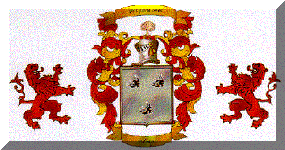
The Hoag Crest Certification # 933303-11.00-2501
Heraldry for Genealogists

The wrongful assumption of
arms in Scotland is punishable by fine and imprisonment. The regulation of Scottish heraldry differs considerably from the system in England, and all persons
using arms are required to register or "matriculate" their right to arms in the Court of Lord Lyon King of Arms. No "Visitations" were made
in Scotland, and the records of grants and matriculations of arms commence only in 1672. The shields of arms (but not the crests) are all listed for the period
1672-1973 in Sir James Balfour Paul, An Ordinary of Arms contained in the Public Register of all Arms and Bearings in
Scotland (2 vols. 1903 and 1977). An Ulster King of Arms was
first appointed in 1552, and records of grants in Ireland exist from that date. Heraldic jurisdiction over Northern Ireland was transferred to the College of
Arms in 1943, the office of Ulster King of Arms being joined to that of Norroy King of Arms. In the Republic of Ireland, an official Genealogical Office was
established in Dublin, with the Chief Herald of Ireland at its head, and his authority is the primary one in Eire. Photocopies of the old records of Ulster King
of Arms are deposited in the College of Arms, the originals being retained by the Chief Herald. Do
not assume that a present-day family is descended from a person of the same surname to whom the arms were originally granted or confirmed, without
generation-by-generation evidence. There were many people who insisted upon having a coat of arms, whether they had a right to them or not, and there were also
a number of pretenders calling themselves heraldic artists, who were more than willing to supply anything for a price. A coat of arms does not necessarily
belong to a person just because someone of the same surname bore it. He must prove descent from the owner. See
The Right to Arms (Leaflet No. 15 by Society of Genealogists. There simply is no such thing as a family
(as in surname) Coat of Arms. They were granted to individuals, not families. See the following
articles by Joseph C. Wolf
Mottoes
are often associated with heraldic devices and may provide a useful clue in the identification of arms. However, there is no monopoly on the use of a particular
motto, and the same motto may therefore be used by many different families. Numerous mottoes are listed and identified (and foreign ones translated) in C N
Elvin, A Handbook of Mottoes (1860, revised edition 1971). One major misunderstanding about Coats of Arms is how
descendants can claim it. While the Coat of Arms is inherited, it is also changed to reflect the new sons who have inherited it. Each son has a different
cadency added to the coat of arms. The oldest son drops his cadency when his father dies (reverting the coat of arms back to the original format). That is why
you will often see that a coat of arms is given from oldest son to oldest son. All others must have a modified version. See: A
Primer of Blazonry. Heraldry
is the practice of devising, blazoning, and granting armorial insignia and of tracing and recording genealogies. An essential principle of heraldry is heredity.
In England, arms are obtainable solely by grant to an applicant and his male heirs from the College of Arms, acting for the Earl Marshal of England (the Duke of
Norfolk). At the time of the grant, the applicant registers the pedigree of those of his family who are personally known to him. To register earlier
generations, the College of Arms will require that the evidence be checked and will do so for an additional fee. Descendants of the grantee later may register
details about themselves to add to the pedigree. The COLLEGE OF ARMS is the corporation of heralds
responsible for controlling, granting, and confirming arms in England under the general supervision of the Duke of Norfolk in his capacity as Earl Marshal. It
was incorporated by Richard III* (1483-1485) in March 1483 or 1484. The Official Registers of the College include the armorial bearings granted or confirmed to
English and Welsh families from the fifteenth century until today, and family trees of thousands of families of English and Welsh origin. See many persons
mentioned in: Commoners' Arms in England Armorial
bearings were originally marks of identification for knights in armor in war and in tournaments. The earliest known are those of Geoffrey of Anjou, father of
Henry II* (1154-1189) and are described in a chronicle of 1127. Henry II (Curtmantle, Fitzempress) d.
1189 aged 56 of a fever and buried at Fontevraud. This unusually able, energetic and choleric man (the first Plantagenet) had a large spherical head,
close-cropped reddish hair, gray bloodshot eyes, a cracked voice and legs bruised livid from hard riding. To purge his guilty complicity in the a-Becket murder
he let himself be scourged by 80 Canterbury monks. When his lately rebellious son visited to view his corpse, blood gushed from its nose until Richard left the
room. So they say. CARR'S DICTIONARY OF ENGLISH KINGS, CONSORTS, PRETENDERS, USURPERS, UNNATURAL CLAIMANTS & ROYAL ATHELINGS (Kettering: J. L. Carr
Publisher, undated). From
the reign of Richard I* (1189-1199) onward, armorial bearings became numerous and appeared on the seals of private families, remaining unchanged in the
same families, and passing from father to son. Richard
I (Coeur de Lion) d. 1199 aged 42 from a direct hit by a frying pan fired by a French crossbowman whilst enforcing a claim to a valuable archeological find. He
had auburn hair, furiously blue eyes and apelike arms. His body was buried at his father's feet at Fontevraud, his heart at Rouen and his bowels at Poitiers.
CARR'S DICTIONARY OF ENGLISH KINGS, CONSORTS, PRETENDERS, USURPERS, UNNATURAL CLAIMANTS & ROYAL ATHELINGS (
Kettering: J. L. Carr Publisher, undated). In
Europe in the Middle Ages, genealogy was concerned with the hereditary aristocracy and the laws of inheritance, especially relating to land, and the emphasis
was on royal and noble pedigrees. The heraldic Visitations, which began in England in 1529-1530, recorded pedigrees as well as coats of arms. After Henry VIII*
(1509-1547) caused the English church to break with Rome, English parishes were required, starting in 1538, to keep registers of baptisms, marriages, and
burials, which marked the beginning of record keeping for all English people regardless of class. Henry
III, d. 1272 aged 66 of a languishing distemper and partly buried in a gold cup at Westminster. He was of moderately compact build, had a furrowed brow, one
drooping eyelid and normally conversed in French. He claimed that fining rebels was more profitable than hanging them, established a primitive consumer
protection service, built a small house for converted Jews, and enlarged the prosperity of barristers by abolishing Trial by Fire & Water. CARR'S DICTIONARY
OF ENGLISH KINGS, CONSORTS, PRETENDERS, USURPERS, UNNATURAL CLAIMANTS & ROYAL ATHELINGS (Kettering: J. L. Carr Publisher, undated) SEAL;
CREST; SUPPORTERS. The personal identifying device in the Middle Ages, the equivalent of our signature, was the engraved SEAL. On this a knight or lord was
usually depicted fully armed and on horseback. Once armorial bearings came into widespread use they were soon visible on the seal's shield and/or lance flag.
Because they were more readily identifiable than the mounted figure they soon came to form the whole of a seal's device, at least on one side. The earliest
known English seal showing arms is of 1136-8. Later in the century part of a knight's bearings also came to be displayed on his helmet, and this gave rise to
the CREST, of which the earliest known example is of 1198. In the 13th century, the application of armorial bearings spread to horse trappings and surcoats,
from which came the name "coat of arms." The SUPPORTERS that later became the privilege of peers were at first merely decorative additions on the
larger seals used by magnates. This is becoming more complicated than you had
anticipated, isn't it? Before
computers and color printers:
A look at material
and colors used in heraldry See also A Primer of
Blazonry Since armorial blazons had a
number of uses, it was not always possible to depict them in their true colors . . . such as when engravings of arms formed a die for impressing into wax seals.
In heraldry, the word tincture is used, rather than color, and each tincture
was provided with a line art or textural version, so that all remained legally accepted, whether colored or not. The illustrations above, place the black/white
pattern, representing respective tinctures, below the corresponding colors.Additionally, the heralds recognized tinctures such as furs
(ermine, for instance), and several others which were used only outside of Scotland. Tincture names are often seen, but seldom recognized by Americans: GOLD (appears yellow) = or The names listed are in order of their
ranking. Gold/or is the most regal of tinctures; Purple/purpure, the last
color added to the herald's palette, is lowest in rank. In writing, the names of tinctures are usually italicized. Suggested
Reading & References The
Augustan. A Journal of History, Heraldry, Genealogy and Chivalry is a publication of The
Augustan Society, Inc. Fairbairn, James (revised
by Laurence Butters, Seal Engraver to the Queen for Scotland). Crests of the Families of Great Britain and Ireland. London, England: New Orchard Editions (imprint of Cassell PLC), 1986, 1988, 1989, 1990, 1992. Friar, Stephen (edited by).
A Dictionary of Heraldry. New York: Harmony Books, 1987. Innes-Smith, Robert. An Outline of Heraldry in England and Scotland. Derby: Pilgrim Press. Ltd., 1990. Stephenson, Jean, S.J.D.,
F.A.S.G., F.N.G.S. Heraldry for the American Genealogist. Washington, D.C.: Reprinted, with additions, from the
National Historical Magazine of the Daughters of the American Revolution. Issued by National Genealogical Society, Special Publication No. 25, 1959 Summers, Peter, F.S.A., FHS
How to Read a Coat of Arms. New York: Harmony Books, 1986. Woodcock, Thomas
and John Martin Robinson. The Oxford Guide to Heraldry. Oxford, England: Oxford University Press, 1988, 1989.
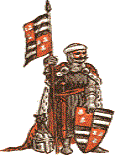 Proving you have an ancestor who bore arms is a major
research accomplishment, for to trace an ancestral line back through several centuries into the mists of antiquities is no small feat. Beyond certain dates
(usually the early 1500s) it is almost impossible to find historical evidence of our ordinary ancestors because written records simply do not exist. However,
often one can find information on armigerous (bearing arms by lawful authority) ancestors. Sometimes it is accurate; sometimes it is not. Modern firms (and they
are numerous on the Web and elsewhere) that advertise coats of arms, shields of arms, family crests, etc. "associated with your surname" are not
averse to selling armorial insignia to people not entitled to them. Caveat
emptor
Proving you have an ancestor who bore arms is a major
research accomplishment, for to trace an ancestral line back through several centuries into the mists of antiquities is no small feat. Beyond certain dates
(usually the early 1500s) it is almost impossible to find historical evidence of our ordinary ancestors because written records simply do not exist. However,
often one can find information on armigerous (bearing arms by lawful authority) ancestors. Sometimes it is accurate; sometimes it is not. Modern firms (and they
are numerous on the Web and elsewhere) that advertise coats of arms, shields of arms, family crests, etc. "associated with your surname" are not
averse to selling armorial insignia to people not entitled to them. Caveat
emptor
Heraldry,
or armory as it is more properly called, became established during the second half of the 12th
century in Europe. The devices displayed on shields and later as crests, on surcoats, bardings (armor and trappings for horses) and banners (square or oblong
flags emblazoned with the arms and sometimes fringed with the livery or armorial colors—personal flags used throughout the Middle Ages by the nobility down to
the knights banneret), served to distinguished armored combatants in war and in tournaments. At first arms were the sign of the greater nobility, but by the
mid-13th century they were also extensively used by lesser nobility, the knights, and those who later came to be called gentlemen. See: Glossary
of Terms Gentil was an Old French word meaning noble, and originally a man of gentle
birth was one born—legitimately— into the nobility. Eventually the term gentleman came to designate a position
between knight and yeoman. In 1429 an English act of parliament used les gentiles to
describe men holding freehold property of 40 shillings a year or more. From the 16th century on, gentleman usually refers to those who were not required to labor physically and who employed servants. By the middle of the 14th century English
courts upheld the principle that no man could use arms already adopted by another and eventually
the Crown forbade the bearing of arms without authority.
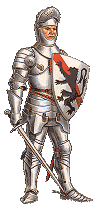 Arms and armorial insignia are granted only by the
Kings of Arms in England, by Lyon
King of Arms in Scotland and Ulster King of Arms in Northern Ireland. See also Heraldry
in Ireland. The College of Arms holds the official register of all coats of arms or heraldry in England and
Wales. Other countries have different customs and laws pertaining to heraldry. Examples: Sweden,
Australia and The American College of Heraldry.
In England, the College of Arms is unsupported from public funds and access to its records is therefore limited. However, the heralds do undertake searches in
the records on payment of professional fees, and if an enquirer wishes to consult a particular manuscript appropriate arrangements can be made. Enquiries should
be addressed in the first instance to any individual herald or to the Officer in Waiting, College of Arms, Queen Victoria Street, London EC4V 4BT
Arms and armorial insignia are granted only by the
Kings of Arms in England, by Lyon
King of Arms in Scotland and Ulster King of Arms in Northern Ireland. See also Heraldry
in Ireland. The College of Arms holds the official register of all coats of arms or heraldry in England and
Wales. Other countries have different customs and laws pertaining to heraldry. Examples: Sweden,
Australia and The American College of Heraldry.
In England, the College of Arms is unsupported from public funds and access to its records is therefore limited. However, the heralds do undertake searches in
the records on payment of professional fees, and if an enquirer wishes to consult a particular manuscript appropriate arrangements can be made. Enquiries should
be addressed in the first instance to any individual herald or to the Officer in Waiting, College of Arms, Queen Victoria Street, London EC4V 4BT
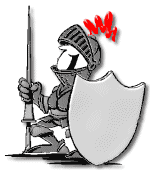
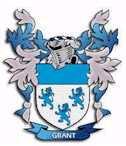 While
only a few North American, Australian and New Zealand families are entitled to bear arms, most of us are
fascinated by the wonderfully elaborate devices that can be found on coats of arms, often
erroneously called family crests. You will find many of them used as colorful illustrations on family home pages on the Web See examples at:
While
only a few North American, Australian and New Zealand families are entitled to bear arms, most of us are
fascinated by the wonderfully elaborate devices that can be found on coats of arms, often
erroneously called family crests. You will find many of them used as colorful illustrations on family home pages on the Web See examples at:
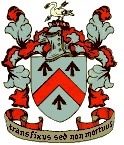
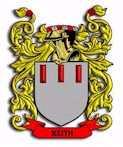
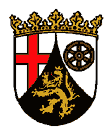
Suggested Reading: A Complete Guide to Heraldry by A. C.
Fox-Davies, revised by J. C. Brook-Little (1969)

![]()
*[The children of Henry VIII were] Henry, Prince of Wales (died aged two months 1512). Mary (I) (by
Catherine of Aragon). Elizabeth (I) (by Anne Boleyn). Edward VI (by Jane Seymour). Natural son Henry Fitzroy (by mistress Elizabeth Blount) died 1536 aged about
20. Henry was a forceful king who broke with the Roman Catholic Church by the Act of Supremacy (1534) and also built a modern Royal Navy. . . Lambert, David and
Randal Gray, COLLINS GEM GUIDE TO KINGS AND QUEENS OF BRITAIN (Glasgow: HarperCollins Publishers, 1991)
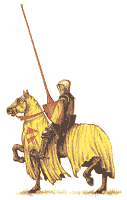

An ancestress's arms will only appear on a shield if
she was an heraldic heiress (she had no surviving brothers or brothers' heirs) or became "an heiress in her issue" because of the extinction of her
father's male line (the extinction of a male line is commonly referred to by Americans as having "daughtered out"), in which case her own male-line
descendants are entitled to quarter her arms on the shield with their own. If a person has more than one heiress in his male line, or if the arms of any of them
were already quartered with those of ancestresses in their female lines, he is likely to have more than four quarters. In such a case, the ancestresses' arms
are arranged in rows after his own, with the most recently acquired one first, followed by any quarterings it had, and then by the next most recent, and so on.

They are:
SILVER (appears white or light gray) = argent
BLUE = azure
RED = gules
BLACK = sable;
GREEN = vert (or sinople)
PURPLE = purpure